Causes and treatment of leaf fall in ficus Benjamin
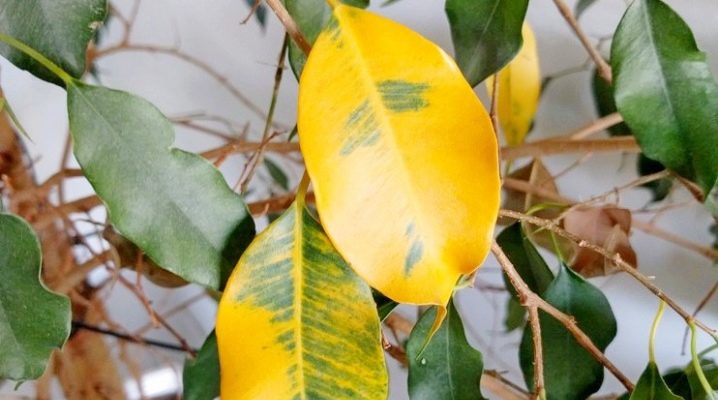
Among indoor plants, Benjamin's ficus occupies a special place. They love him and are happy to place him on the windowsills. At the same time, few people suspect about the capriciousness of their new "resident" and the requirements for caring for him.
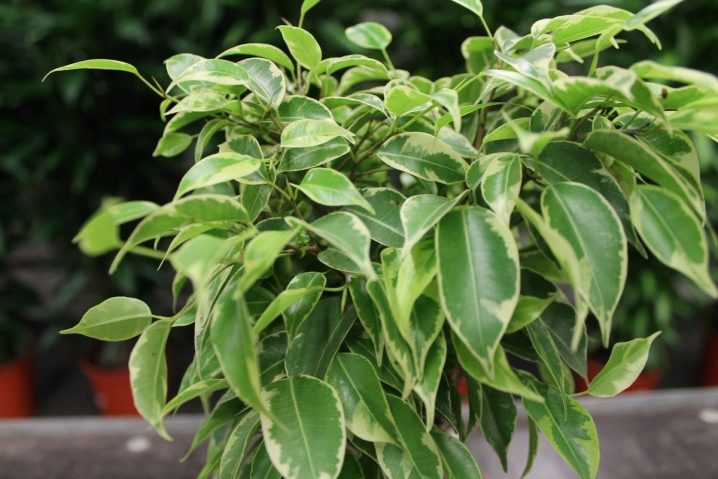
Peculiarities
All ficuses are amazing plants, they are distributed all over the world. There are about a thousand varieties of this indoor flower, but among them Benjamin's ficus stands out. This plant attracts with excellent decorative features: variegated colors, glossy leaves that form a neat, well-formed crown. Ficus Benjamin grows relatively slowly, does not stretch and always looks presentable.
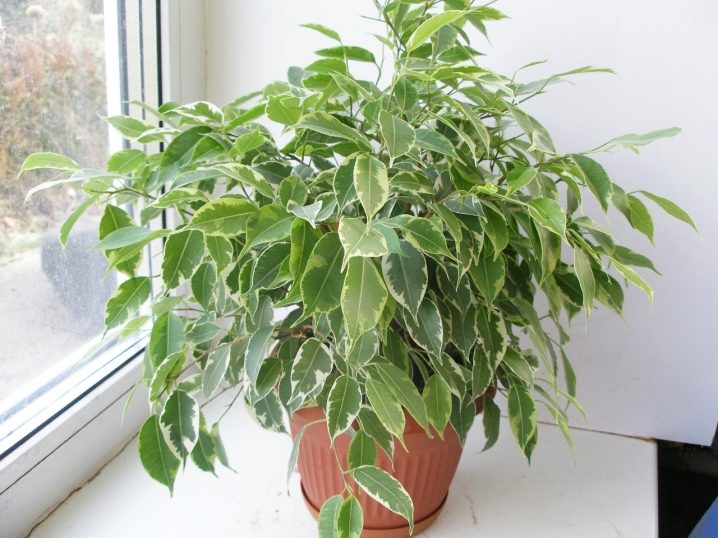
The plant cannot be called particularly capricious., and yet some conditions in the process of its maintenance must be respected. If Benjamin's ficus doesn't like something, then its green leaves will turn yellow and fall off, leaving the branches of the ficus bare.
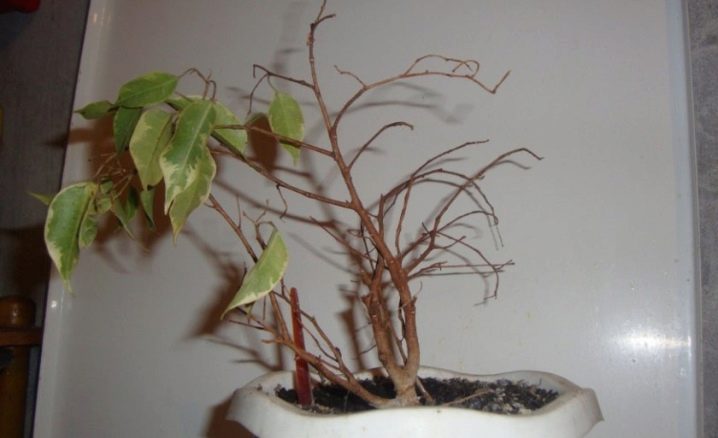
Such a nuisance can be associated with various factors.that require a quick response and prompt elimination. In this case, it will still be possible to revive the flower and return it to its former beauty. In this article, we will find out why Benjamin's ficus leaves turn yellow and fall off and how you can fix this situation. We will also study preventive measures so that this problem does not arise in the future.
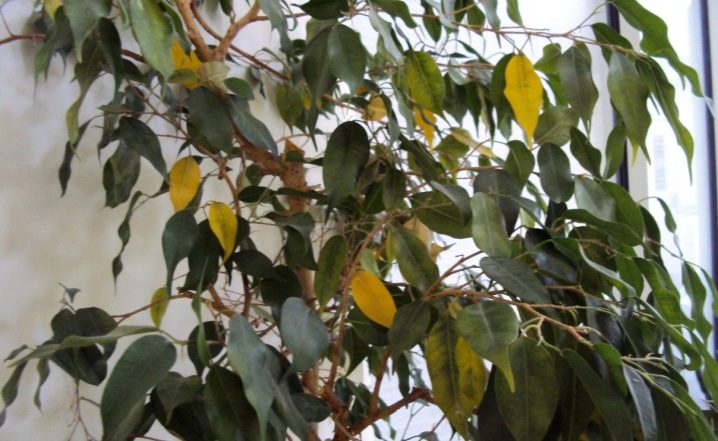
Causes
Let's not rush to analyze the reasons that Benjamin's ficus strongly discards leaves. First, we want to draw attention to the fact that a small amount of foliage can fall off in autumn or winter for no reason. Usually this process begins in November, but deviations in both directions are possible. The number of discarded leaves will vary within 10 pieces.
This situation is the norm, therefore, you should not worry and take urgent measures. With the onset of spring, new foliage will appear in place of the fallen specimens, and in the summer the plant will be lush and even more beautiful.
If the opal is more than 10 leaves, then you can already start worrying about the state of your favorite plant.
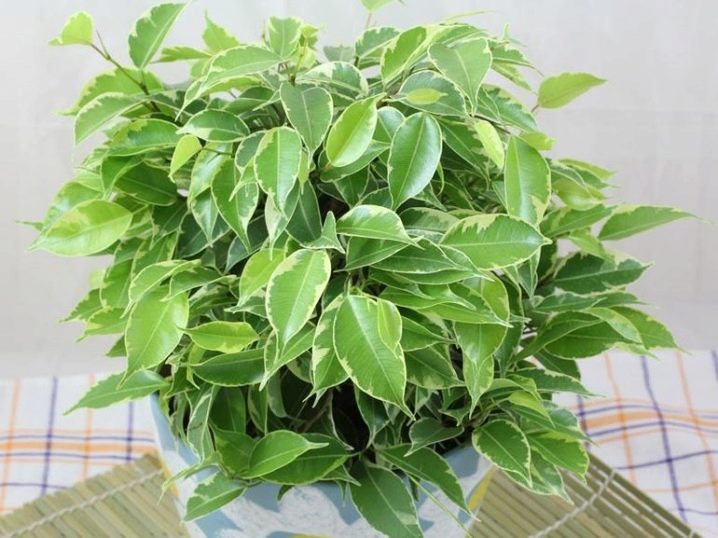
The ficus begins to voluntarily part with the leaves only after the sixth year of life. Up to this point, old foliage is essential for the plant, as it plays an important role in the processes of photosynthesis. Therefore, for no apparent reason, the room "resident" will not part with any of his leaves.
Lower leaves can fly naturally. If there is not enough foliage at the top, it means that the plant could not absorb and accumulate the required amount of the necessary trace elements. Therefore, excess foliage flies from the ficus, for the maintenance of which the plant does not have enough strength. This situation is not critical, but for the grower, it should serve as a signal that will indicate about insufficient feeding.

Diseases
Ficus Benjamin is highly resistant to various kinds of diseases and pests. And yet, on rare occasions, it is for these reasons that it can shed its foliage. This plant is characterized by diseases of fungal origin: anthracnose and cercospora. They appear as spots on the leaves. As the infection progresses, the affected leaves turn yellow, dry and fall off.
Such diseases must be treated, otherwise the plant may disappear completely and even infect its neighbors.
The essence of the treatment is to remove the affected leaf plates and treat the plant with fungicides in accordance with the instructions for use.

Pests
From pests on ficus can settle spider mites, scale insects and thrips... The first problem is identified by the thin cobweb that envelops the young leaves. In a neglected state, not only the leaves become dry, but also the tips of the shoots. In specialized stores, many drugs are sold to combat spider mites.
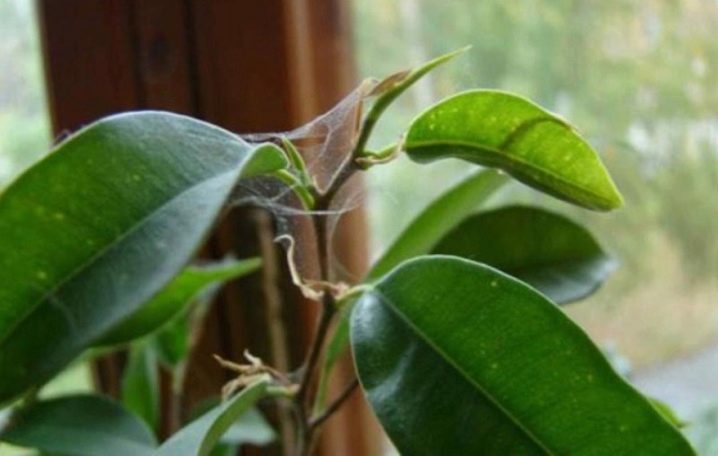
Thrips actively reproduce on ficuses and quickly switch to healthy plants. It is difficult to fight this pest, but it is necessary, because after a short time you can find traces of infection on all the flowers in the house. The thrips are located on the back of the leaf plate. None of the folk methods are able to completely rid the flower of this pest. Only the use of insecticides will cure the houseplant.
Re-processing should be carried out in a week, since young individuals appear from the eggs, which can be found not only on the plant, but also in the ground.


Shield well known to every grower, as it is often found on deciduous house plants. Mostly this pest is brought into the house with new flowers purchased from specialized stores. It is also difficult to fight the scabbard, since adults are covered with a shell, which complicates the process of processing with special preparations. Adults feed on plant sap, which causes irreparable harm to leaves and even shoots.
The shield must be removed from the plant with a sponge and soap solution, followed by treatment with insecticides.
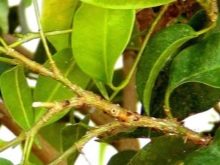
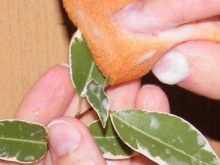

Temperature regime
Ficus Benjamin will develop normally at a temperature of 18 to 25 degrees... At higher temperatures, the leaves will become lethargic, yellow will appear, and over time they will fall off. In a cooler room, the plant will stop developing, the root system will experience hypothermia, which will start processes that will negatively affect the state of the crown.
The situation can be aggravated by the location of the flower on a cold windowsill, concrete or marble floor. Drafts also negatively affect the condition of the plant.
To prevent Benjamin's ficus from shedding foliage, it is necessary to carefully select a place for installing the pot and monitor the temperature in the room.

Watering
Often, due to errors in watering, the plant loses its beauty and loses its leaves. To preserve the flower and help it recover quickly, it is necessary to calculate the water rate for each watering and constantly monitor the soil moisture level. Our tips will help with this:
- between waterings, the soil should dry out 1.5 cm deep; for an adult flower, the drying depth can increase to 3 cm;
- in winter, the frequency of watering is reduced to once every 7 days;
- water intended for irrigation must be warm;
- the frequency of watering directly depends on the air temperature in the room (the warmer, the more often).
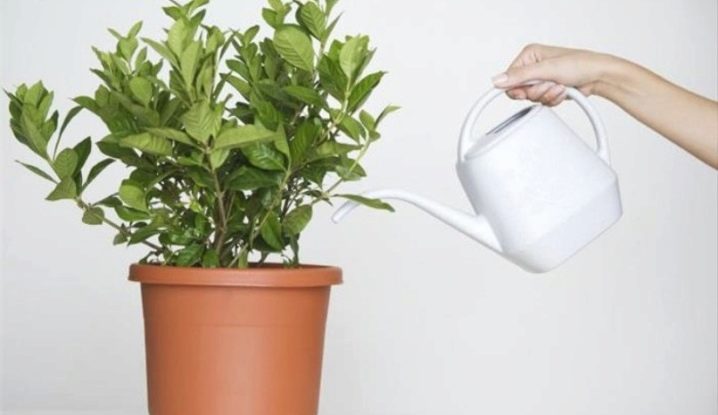
With an excess of water, the ficus can suffer from root rot. The flower will become weak and may shed its crown. It is difficult to fight root rot, and the plant can only be saved in rare cases. All damaged roots must be removed, and the remaining root system is placed in a weakly concentrated solution of potassium permanganate.

With a lack of water, the plant will tend to preserve the roots and its woody part, which will also lead to shedding of foliage. If you restore the water balance and bring the watering process back to normal, the plant will recover, however, this will take some time.
Incorrect transplant
It also happens that the flower, after transplanting, began to shed its foliage. Then we can confidently talk about the violations committed in this process. Ficus Benjamin transplant should be carried out every two years... This period is considered optimal, since the plant just has time to braid the earthy ball with its roots and deplete it.
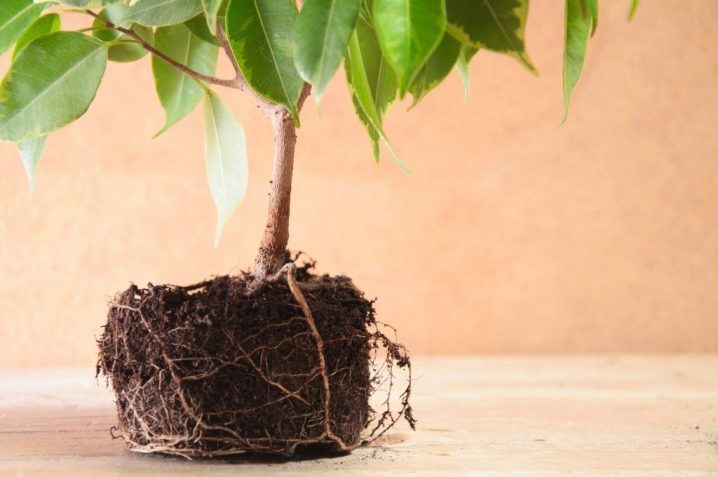
The process of transplanting ficus Benjamin is carried out in accordance with the following rules:
- a new pot is being prepared, which should differ slightly in size from the previous one (by 3 cm in diameter and 5 cm in height);
- carefully and carefully, the flower is removed from the pot;
- the excess earth is shaken off;
- in a pot intended for planting, the bottom is covered with drainage material, a layer of earth is poured on top;
- the plant is placed in a prepared pot, which in its dimensions will correspond to the size of the flower;
- the free space around the root system of the plant is covered with prepared soil, lightly compacted and watered;
- after a while the earth will settle, therefore you will need to add soil to the pot.
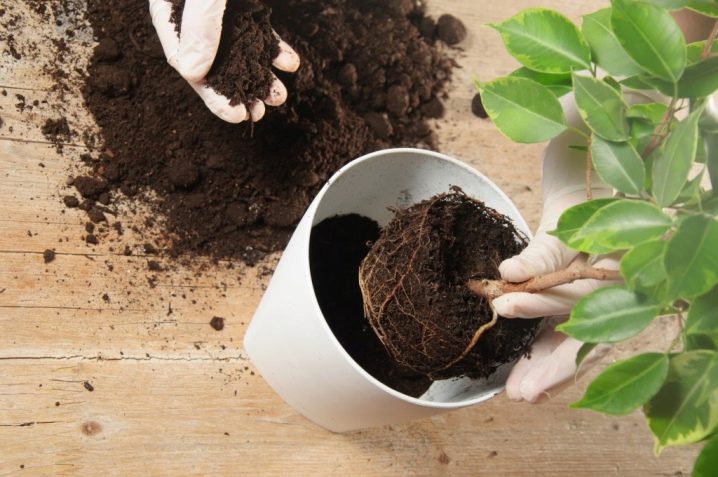
Separately, you need to dwell on the soil that is used for transplanting or planting a new plant. Ficus Benjamin is picky about the soil, so it will not grow and develop normally in bad soil. The soil for such a capricious plant must meet a number of requirements:
- friability and nutritional value are paramount features;
- neutral soil is best suited, but slightly acidic soil is also allowed;
- a prerequisite is the presence of leaf humus, which should make up about ¼ of the total amount of land;
- the amount of peat should not exceed 25%, otherwise the soil will turn out to be too acidic, and the plant will suffer, which will certainly affect the state of the crown.
Quite often, when transplanting ficuses, mistakes are made in observing the proportions of the components for the soil, so it becomes difficult for the plant to take root in new conditions.
If you adhere to the rules described above, then your plant after transplantation will feel good and there will be no problems with it.
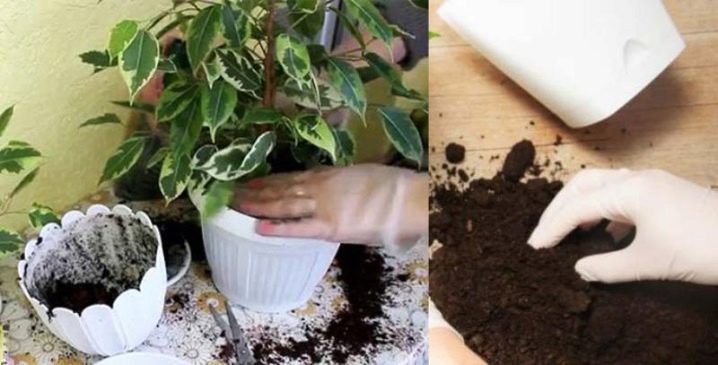
Dry air
For ficus Benjamin dry air is destructive. In such conditions, he dries up, rapidly disappears and is difficult to rehabilitate. As soon as this problem was noticed, it is necessary to immediately start spraying the plant with a fine spray type. The ideal option would be to install a humidifier in the room.
You can also put an aquarium near the pot or just a tank of water. Thus, the humidity will be maintained at the required level, and there will always be settled water at hand for irrigation.

Ficus responds well to warm showers. Such procedures are relevant in the summer, the soil is previously covered with a film. In winter, you need to periodically wipe the leaves with a damp soft sponge. Thus, dust will be removed from the leaves, the humidity will be maintained and the plant will be examined for diseases and the appearance of pests.
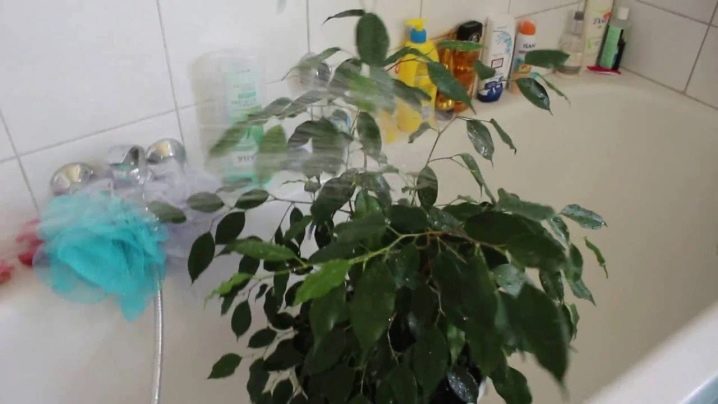
Depleted soil
This factor should not be ruled out, since it is highly likely to cause foliage to fly around. The soil becomes depleted if the plant is not transplanted and fed for a long time. There are several ways to eliminate this situation:
- the introduction of fertilizers into the soil that are suitable for ornamental deciduous plants;
- ficus transplant;
- regularly pouring fresh soil into the flower pot.
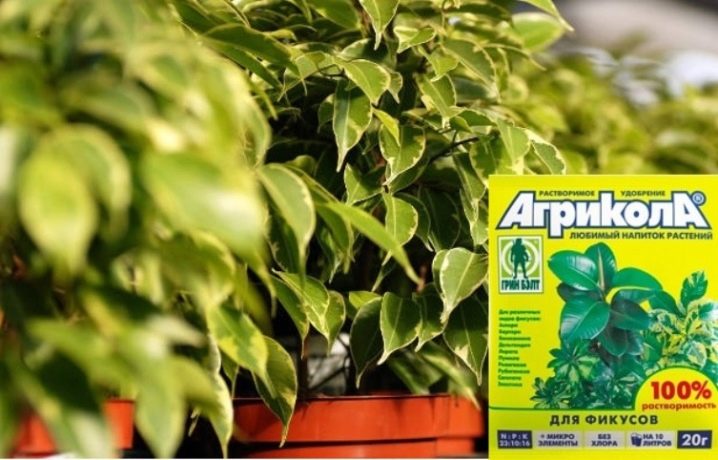
How to fix it?
To save the plant and help it cope with the problem, it is necessary to react quickly and not start an already problematic situation. Next, we will talk about what to do with a plant that gets rid of foliage.
Initially, the essence of the problem is determined, and only after that appropriate measures are taken for salvation.
It is necessary to consistently study all the reasons due to which the plant disappears. First of all, pests are checked and diseases are detected, then you can proceed to the analysis of watering and conditions of detention (air humidity, dry soil, drafts, room temperature). Using the method of elimination, we find the real cause and deal with it.
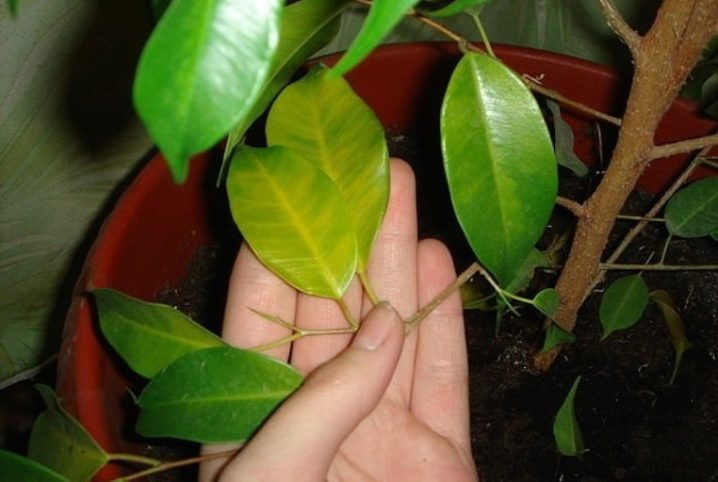
Below are tips to help cure the plant, and will allow the ficus to return to its former beauty in a relatively short time.
- When pests are detected or diseases, tough measures are taken to eliminate them, the affected foliage can, or rather, must be cut off. Don't forget to look at other indoor plants.
- In many cases, the actual solution is a ficus transplant. It is important to make a good soil in compliance with all proportions. Transplanting should be carried out by the transshipment method, in this case, the acclimatization time will be shortened, and the plant will not hurt.
- After fixing the problem the plant needs to provide enhanced feeding. Fertilization will allow you to quickly restore the ficus, the plant will get stronger, you will notice how its shoots harden day by day. The restored ficus can continue to delight the eye with rich glossy foliage.

If everything is done correctly and in a timely manner, after a short time, new leaves of the correct shape and the desired color will grow on the shoots. To fully reanimate Benjamin's ficus will take effort and time - it won't be easy. But in the future, the plant will thank for its care with a lush crown, intensive growth and a gorgeous appearance.
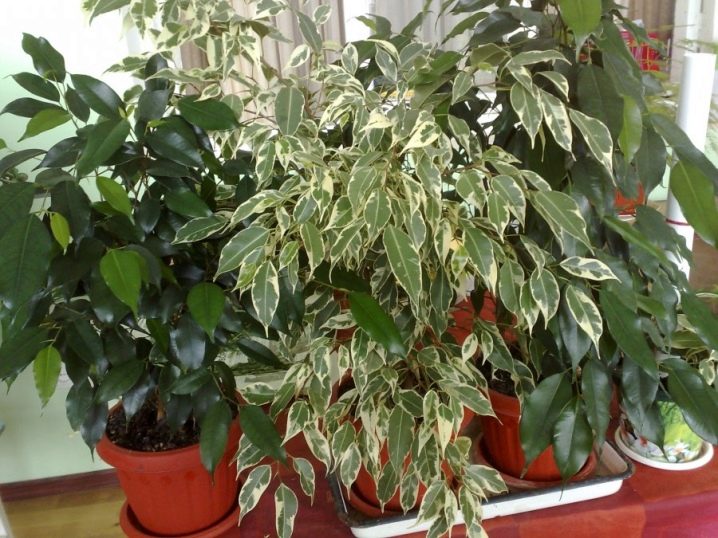
Prevention measures
So that the fall of leaves never darkens the joy of growing Benjamin's ficus, it is necessary to follow simple rules of care and preventive measures:
- in winter, watering is reduced to once a week;
- at a room temperature of about 10 degrees, irrigation of the land is not carried out;
- the air temperature in the room is kept within the range of 20-25 degrees throughout the year, except for winter time, for this period 16 degrees will be considered the norm;
- leaves must be constantly sprayed or wiped with a damp cloth;
- for the location of the flower, it is necessary to choose a bright room without direct sunlight and drafts, the east side would be the best option;
- watering should be moderate, but frequent, using warm water;
- it is better to choose the spring period for transplanting, it will be easier for the plant to go through the acclimatization stage;
- before each watering, the soil must be loosened, which will avoid stagnant water and ensure its even distribution;
- fertilizer is applied as needed, it is better to feed less often, but better;
- the mixture for planting must be taken fresh and of high quality.
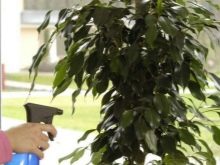
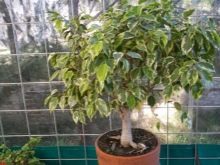
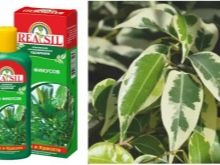
Caring for Benjamin's ficus at home cannot be called difficult, and yet this flower is demanding on the conditions of detention. If you provide this plant with the necessary conditions, it will delight with juicy, bright foliage and a spreading crown.
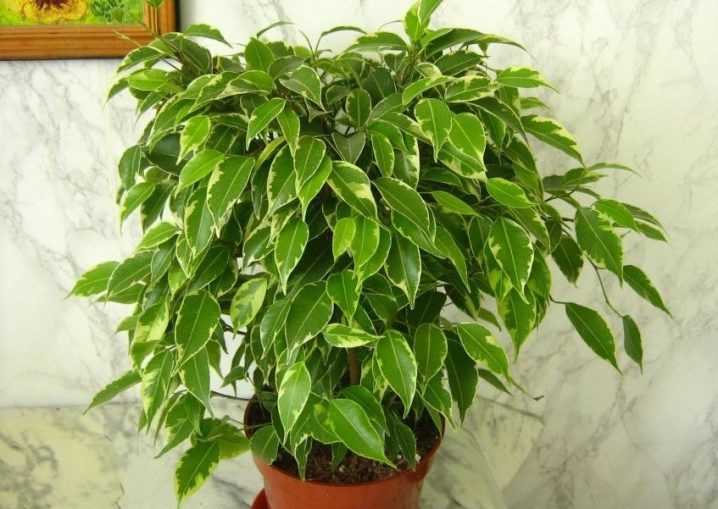
The reasons for the leaves of the Benjamin ficus and how to eliminate them can be found in the following video.































The comment was sent successfully.